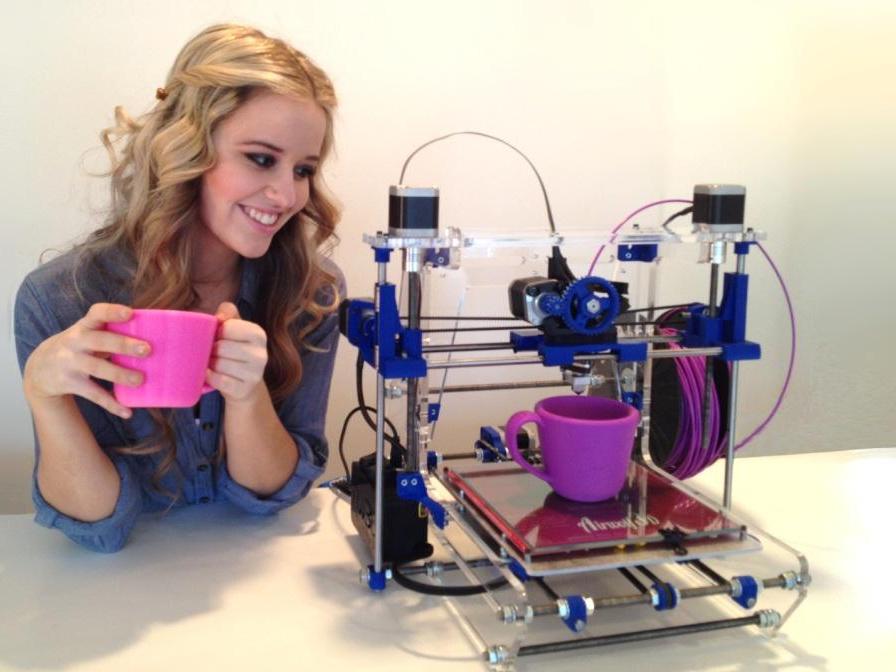The Printlosophy of Joe is a new blog series from 3D Systems that intends to provide factual answers and perspectives about the realities of 3D printing to new adopters or interested parties.
3D printing has long had a perception problem. When 3D printing was invented a quarter of a century ago it was developed as an industrial manufacturing tool and until the patents on the various processes started expiring that is all it ever was. But once the maker community got a hold of it 3D printing became something more. It created an entire cultural movement, and that movement was written in a language that only makers and hackers could really understand. To the outsider, 3D printing sounds like Star Trek in real life. Some of that is fuelled by lack of knowledge of course, but a lot of it is because 3D printing is being sold to the general public the same way that it’s sold to engineers and makers. Frankly, that’s a little like selling a product in Russian to an English speaking country. They might be able to make out the basics, but they’re simply not going to understand most of what is being said.

Those who are familiar with how 3D printing works also have the context to understand what the limitations are. When they hear “one button 3D printing” they understand that no 3D printing happens that quickly, and there are a lot of steps that need to be taken before you get to even press the one button that starts the machine. When someone says “this shoe was 3D printed” they understand that really, most of the shoe was 3D printed and then assembled after the fact and the final product is probably not wearable and would cost hundreds of dollars to make. They understand that when someone says a 3D printer is fast, it is still going to take hours, regardless of the size Yoda head that is being printed.
So when large 3D printer manufacturers talk about how you can 3D print anything that you need in your home, makers and engineers understand that while there is truth in that statement, it still isn’t exactly true. Yes you can replace that knob on your stove, but you either have to design the knob yourself in a CAD program or hunt down a 3D model of the knob online, then tweak it to match your stove, then make sure that the model is printable, then finally wait for it to print. And of course you’re not done there, you may have to remove support structures, dip the knob in chemicals to smooth out the striation, or even print it a second time because your printing bed got bumped and it screwed up the z axis. And there isn’t anything wrong with any of that, the fact that we can do it is still pretty spectacular. But for someone who doesn’t know how everything works, all of that effort is going to be a bit of a shock.
So I was very curious about the new series of blog posts written by 3D Systems marketing associate Joe Borrello that is being posted on the 3D Systems blog called The Printlosophy of Joe. Based on the first entry the purpose of the blog is intended to cut through the hype a little bit and bring some sobering reality to the picture. While making sure to point out that 3D printing is still an amazing technological advancement. Considering that 3D Systems CEO Avi Reichental is most likely the most public face of 3D printing and he regularly waxes lyrical about what 3D printing can do, it seems to be an interesting shift in the company’s marketing philosophy.
The first column had to do with time. Specifically the question that everyone who knows something about 3D printing hates to be asked by someone who does not know anything about 3D printing. How long does it take to print something? It is, of course, an unanswerable question, because it always depends on what is being printed, what type of machine is being used, and what material is being used. Borrello manages to do a good job of breaking it down and explaining why it’s a tough question with no easy answers.
I hope this is a sign that 3D Systems is starting to be more savvy with their product marketing, and that they are going to be pushing a more realistic experience to potential new adopters. And if a company the size of 3D Systems starts doing it, naturally everyone else is going to follow suit. If 3D printer manufacturers really want to get 3D printers into every home, then they are going to have to start selling it to people in ways that makes sense to them.



